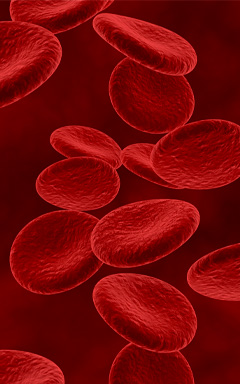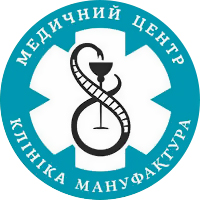
Plasmapheresis in the practice of autoimmune diseases treatment
As we know immune system protects our body against foreign cells entered inside, such as viruses, that may hurt the health. In autoimmune diseases, the body's immune system mistakenly turns against itself, attacking its own tissues. Some of the specialized cells involved in this process can attack tissues directly, while others produces substances known as antibodies that circulate in the blood and carry out the attack. Antibodies are proteins produced by our body and programmed to identify a specific cell and destroy it. Antibodies that attack the tissues of your own body are called autoantibodies.
The most common approach in the treatment of autoimmune diseases is the drug method, that uses the medication suppressing the immune system or reducing tissue inflammation. But all immunosuppressive medications have serious side effects when taken in high doses or for a long time.
In the 1970s, supported by the Muscular Dystrophy Association (MDA) researchers developed a new approach to treating autoimmune conditions. Instead of trying to change the body's immunity with medication alone, the developers have assumed that mechanical removal of autoantibodies from the bloodstream would have a dialysis-like effect (so-called "artificial kidney"), which has been used successfully in renal dysfunction. The procedure of such kind of blood "cleansing" became known as plasmapheresis, meaning the plasma separation from blood and called also "plasma exchange".
How does plasmapheresis help with autoimmune diseases?
The plasmapheresis itself is the process in which the fluid part of blood (i.e. plasma) is separated from blood cells by a device known as a "cell separator". Separators work either by passing the blood at high speed to separate the cells from the fluid or by passing the blood through the smallest membranes, where only the liquid part of the blood can pass.
Blood cells are returned to the patient's bloodflow, while the isolated plasma with dissolved antibodies in it (and in the case of an autoimmune patient - autoantibodies) is discarded and replaced by other fluids like saline or albumin, or is underwent a process of removal of heavy cells from the blood and then returns to the patient's bloodflow.
Such removal of circulating autoantibodies, immune complexes, cytokines (cells also involved in the body's specific immune response) and other mediators of inflammation is considered to be the main mechanism of therapy action.
Also the inclusion of plasma exchange in the treatment of autoimmune diseases, allowed to significantly reduse medication doses suppressing the immune processes or inflammations, which in turn reduces the negative impact on the body by side effects of drugs.
Today, plasmapheresis is widely accepted for the treatment of severe myasthenia gravis, Lambert-Eaton syndrome, Guillain-Barré syndrome and chronic demyelinating polyneuropathy. Its effectiveness, however, in other conditions such as multiple sclerosis, polymyositis and dermatomyositis, is still being studied.
The American Society of Apheresis (ASFA - www.apheresis.org) produces regularly updated indications for the plasma exchange in therapy, basing of proven medical practices. Thus, for today, the association has published two lines of practically proven evidence for plasmapheresis effectiveness in deseases.
Category I indications for therapeutic plasma exchange (first-line therapy based on strong research evidence):
- Neurology:
- Acute Guillain–Barré syndrome
- Chronic inflammatory demyelinating polyneuropathy
- Myasthenia gravis
- Polyneuropathy associated with paraproteinaemias
- PANDASa (Paediatric autoimmune neuropsychiatric disorders associated with streptococcal infection)
- Haematology:
- Thrombotic thrombocytopenic purpura
- Atypical haemolytic uraemic syndrome (autoantibody to factor H)
- Hyperviscosity syndromes (paraproteinaemias)
- Severe/symptomatic cryoglobulinaemia
- Renal:
- Goodpasture’s syndrome (anti-glomerular basement membrane antibodies)
- Antineutrophil cytoplasmic antibody (ANCA)-associated rapidly progressive glomerulonephritis
- Recurrent focal segmental glomerular sclerosis
- Antibody-mediated renal transplant rejection
- Metabolic:
- Familial hypercholesterolaemia (homozygous)
- Fulminant Wilson’s disease
Category II indications for therapeutic plasma exchange (established second-line therapy, requires support by other treatments):
- Neurology:
- Lambert–Eaton myasthenic syndrome
- Acute exacerbation of multiple sclerosis
- Chronic focal encephalitis
- Neuromyelitis optica
- Haematology:
- ABO-incompatible haemopoietic stem cell transplantation
- Pure red cell aplasia
- Life-threatening cold agglutinin disease
- Atypical haemolytic uraemic syndrome (complement factor gene mutations)
- Myeloma with cast nephropathy
- Red cell alloimmunisation in pregnancy
- Immunological:
- Catastrophic antiphospholipid syndrome
- Cerebral systemic lupus erythematosus (SLE)
- Metabolic:
- Refsum’s disease
- Mushroom poisoning
There are also a number of diseases in which plasmapheresis does not have clearly proven therapeutic effect. The decision about treatment with the procedure shall be individualized. There are following:
- Post-transfusion purpura
- Autoimmune hemolytic anemia (warm autoimmune hemolytic anemia)
- Hypertriglyceridemic pancreatitis
- Thyroid storm
The distinguished disorders in which published evidence demonstrates or suggests that plasma apheresis is ineffective or harmful and requires the approval of a medical review board, are the following:
- Stiff person syndrome
- Hemolytic uremic syndrome (typical diarrhea-associated)
- Systemic lupus erythematosus (nephritis)
- Immune thrombocytopenia
Clinical benefit from plasma exchange is primarily observed in diseases with a self-limited course, whereas a long-term effect in chronic disorders is less frequently achieved. It is often necessary to repeat the courses. It should also be borne in mind that excessive suppression of the immune system can temporarily occur with plasmapheresis, since the procedure isn’t selective about which antibodies it removes. Oftenly, a sudden decline in autoantibody levels may also result in an increased antibody production after treatment. So therapeutic course plasmapheresis would call for the combination of short-term active plasma exchange with long-term immunosuppression.
In autoimmune diseases the plasmapheresis therapy is always weighed and evaluated by specialized doctors with respect to specifics of the disease, its severity and the patient's general condition.
The following sources were used when preparing the material:
Make an appointment
Your name
Phone number
Direction
Desired date
Comment













